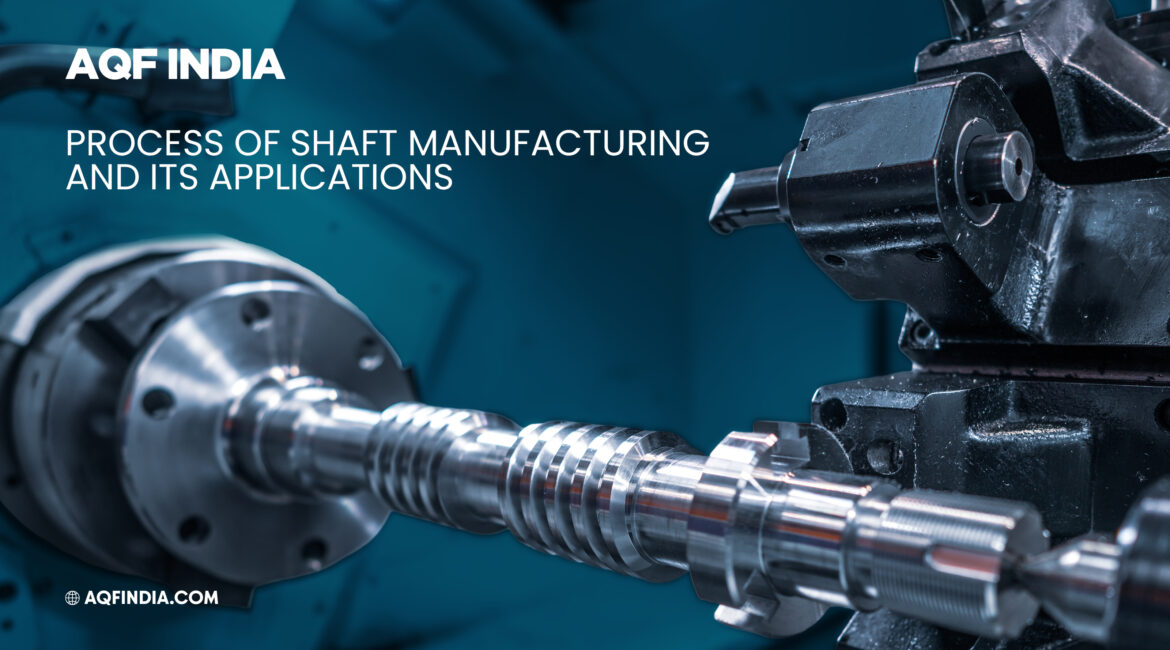Shafts are an essential part of today’s machines that allow efficient transfer of power, torque, and motion. From cars to turbines to large industrial machines, shafts will either improve or inversely reduce the overall efficiency and life of mechanical systems. A good shaft that is accurately considered and thoughtfully designed during the shaft manufacturing process will enhance performance, while minimizing wear, energy loss, and downtime, all of which impact productivity.
The Ultimate Goal of Shaft Manufacturing Process
The primary goal of the shaft manufacturing process is to produce shaft products with rigid performance standards. These products must perform under high stress, involve fatigue resistance and dimensional accuracy, while operating under extreme conditions. Whether a drive shaft for an automobile, a rotor for an industrial application, or a turbine spindle, the product design and manufacturing process is oriented to solidifying specific elements of durability, accuracy and cost efficiency.
Overcoming Challenges in Materials and Machining
Shafts are complex components and the materials used for the shaft must be based on the requirements of the application; load, speed, environment are the main factors. The materials in consideration range from carbon steel, alloy steel, stainless steel, and specialized composites, when and if necessary. There are also specific machining and costs involved with each material type.
The last part to consider is accuracy of machining, tolerances, and surface finish. If anything is out of tolerance, if you have no balance it can cause vibration, machined parts will not last as long etc. Industries are also asking for many shafts to be customized, therefore it applies unique manufacturing challenges that require high-level technology and expertise.
Leveraging Technology and Expertise for Excellence
To overcome these challenges, modern manufacturers rely on cutting-edge processes and quality control methods. Forging, heat treatment, precision machining, and grinding are used to enhance the strength and reliability of shafts. Advanced CNC technologies ensure exact tolerances, while surface hardening processes improve wear resistance. The materials used for shaft manufacturing are tested for tensile strength, hardness, and fatigue resistance before use, ensuring consistency in performance.
Companies like AQF India play a vital role in this domain by combining engineering excellence with innovation. With state-of-the-art facilities, strict quality control, and a focus on delivering customer-specific solutions, AQF India has established itself as a trusted name in shaft manufacturing for industries ranging from automotive to heavy engineering.
Applications That Define the Importance of Shafts
Shaft manufacturer design shafts for extensive applications across industries:
- Automotive Sector: Used in drive shafts, camshafts, and crankshafts to transmit motion and power.
- Industrial Machinery: Essential in pumps, compressors, and conveyor systems.
- Aerospace: Critical for turbines, landing gear, and propulsion systems.
- Energy Sector: Widely used in wind turbines, hydroelectric plants, and thermal power systems.
- Marine Industry: Propeller shafts and rudder systems rely on high-strength shafts for durability.
In summary, the shaft manufacturing process is a blend of science, engineering, and precision craftsmanship. By using the right materials, advanced technologies, and stringent quality control, manufacturers ensure that shafts perform reliably across demanding applications. As industries continue to evolve, companies like AQF India are leading the way in shaping the future of mechanical efficiency with their expertise in shaft production.






